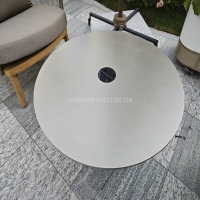Welcome to the website for landscape facilities products and knowledge.
How does the table’s design contribute to easy cleaning and maintenance?
Modern table designs significantly reduce cleaning efforts through intentional engineering and material selection. Tables with seamless surfaces eliminate crevices where dirt and spills typically accumulate, allowing for quick wipe-downs without disassembly. The integration of non-porous materials like quartz, sealed wood finishes, or laminated composites creates barriers against stains and moisture penetration. Many contemporary tables feature rounded corners and edge-to-edge surfaces that prevent debris buildup in hard-to-reach areas.
Manufacturers now incorporate spill-resistant lips on dining tables and liquid-repelling coatings on coffee tables, enabling immediate cleanup without permanent damage. The strategic use of elevated bases and tapered legs provides ample clearance for floor cleaning equipment, eliminating the need to move heavy furniture during routine maintenance. Waterproof table designs specifically address liquid exposure concerns, featuring completely sealed seams and moisture-impervious surfaces that withstand frequent cleaning with various solutions.
Advanced manufacturing techniques allow for integrated designs where components connect seamlessly rather than with visible joints or gaps. This construction approach not only enhances aesthetic appeal but fundamentally reduces maintenance requirements by removing potential accumulation points. Tables designed for easy maintenance often utilize unified material systems where the tabletop and supporting elements share similar cleaning compatibility, simplifying the care process. These design considerations collectively transform table maintenance from a chore into a straightforward, efficient process that preserves both the furniture's appearance and longevity.
Related search:

Recommendation
Outdoor stainless steel table with solar-powered ambient lighting feature - excellent design.